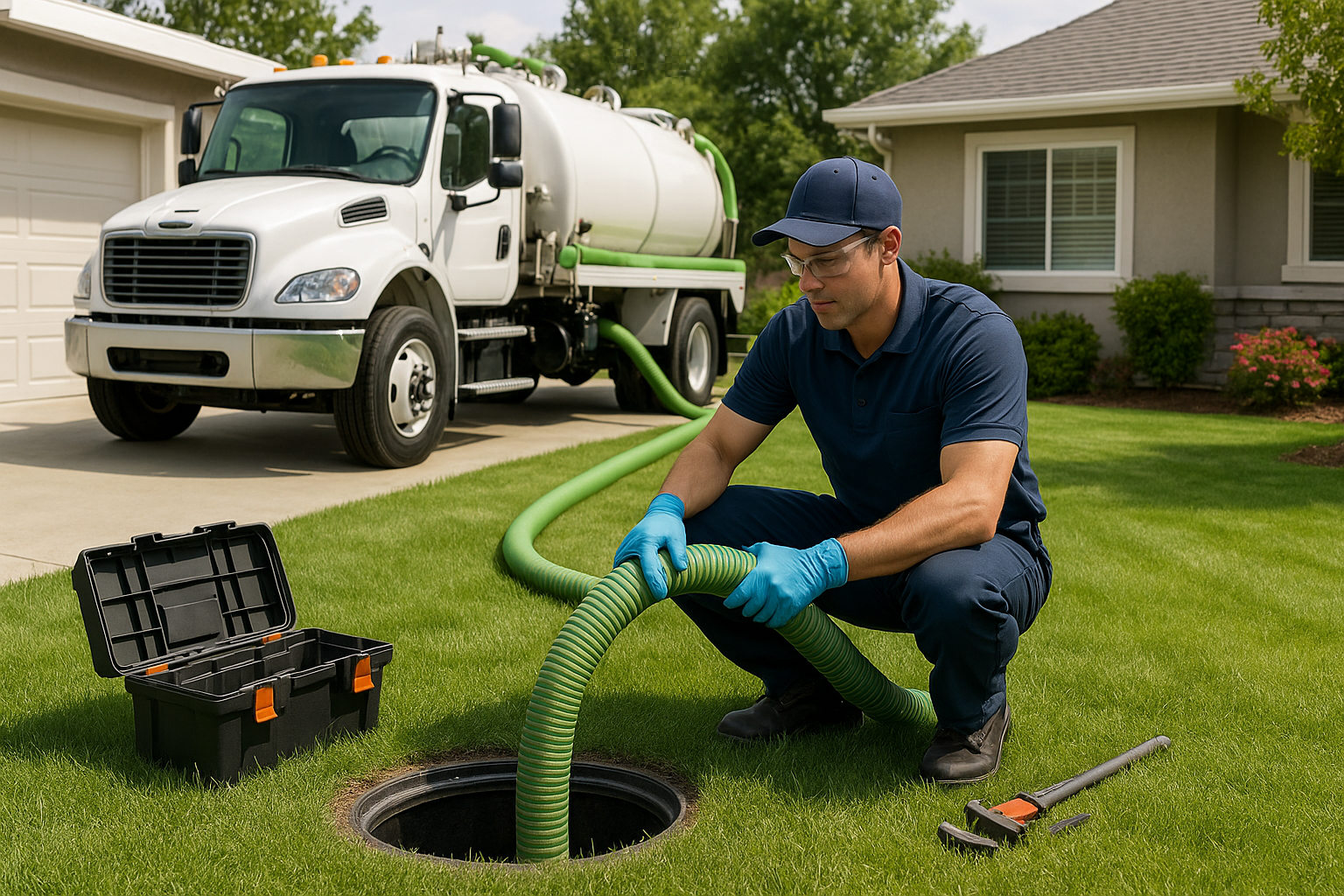Understanding the Basics of Proper Septic Tank Care
When you’re figuring out how to maintain a septic tank, it can feel a little like troubleshooting a problem you can’t actually see. I once talked with a Sacramento neighbor who swore his system was “low maintenance” until it backed up during a weekend cookout. Not exactly the vibe he was aiming for. The reality is, septic tank maintenance becomes simple once you understand the small habits that keep everything running smoothly.
Your septic system works around the clock, and taking care of it saves money, prevents emergencies, and protects your home. Little things like managing water use, paying attention to what goes down the drain, and sticking to a pumping schedule play a major role in long term performance. This guide walks you through practical steps you can use right away, especially if you’re navigating Sacramento’s soil conditions and climate.
Why Proper Septic Tank Maintenance Matters
Understanding how to maintain a septic tank starts with recognizing why consistent care is so important. Your septic system handles showers, laundry, dishwashing and everything you flush. When something goes wrong, you’re dealing with big messes and expensive repairs. Proper septic system maintenance helps prevent backups, extends system lifespan, protects groundwater, and significantly reduces repair costs.
Issues usually start long before symptoms show up. Slow drains might mean sludge is building up, and gurgling noises can point to stressed pipes. Sacramento’s hot summers and dry soil add even more pressure on the system. Knowing how to clean a septic tank, how often a septic tank should be emptied, and what warning signs to watch for helps you stay ahead of trouble.
Step-by-Step Guide to Maintaining Your Septic Tank
Here’s a practical septic tank maintenance checklist that covers the essentials.
Inspecting Your Septic System Regularly
Purpose: Inspecting regularly helps catch problems early before they turn into costly repairs.
A routine septic inspection checks sludge levels, tank condition, drain field performance, and any leaks. Most homes need an inspection every one to three years depending on usage. This habit keeps solids from sneaking into the drain field and causing irreversible damage.
Pro Tip: Schedule inspections during spring or fall to avoid Sacramento’s peak heat.
You can schedule professional inspections through Real Estate Septic System Inspections using this resource: full septic inspection services.
Pumping Your Septic Tank When Needed
Purpose: Pumping removes solids that naturally accumulate and prevents backups.
Even a healthy system collects sludge over time. Most homes need septic tank pumping every three to five years. If you’re wondering how often to pump a 1000 gallon septic tank, it typically follows a similar schedule but depends heavily on household size and water use. Staying consistent with pumping prevents blockages and drain field failures, and it even helps you stay ahead of septic pumping cost surprises.
Pro Tip: Keep a pumping log to avoid losing track of your schedule.
Managing Water Use Throughout Your Home
Purpose: Efficient water use helps your system process wastewater without getting overwhelmed.
Your tank can only handle so much water at once. Running the dishwasher, doing laundry, and showering all at the same time can push solids into the drain field. Spread out heavy water use, install low flow fixtures, and fix leaks quickly. Even a single running toilet can waste hundreds of gallons per day.
Pro Tip: Make a quick monthly check of toilets and faucets to catch leaks early.
Protecting Your Drain Field from Damage
Purpose: A healthy drain field ensures wastewater absorbs into the soil properly.
Never park vehicles or build structures on your drain field. Heavy weight compresses the soil, damaging pipes and restricting drainage. Use shallow rooted plants and make sure your gutters direct water away from the drain field.
Pro Tip: If you need help locating your tank or replacing damaged components, explore Tank Locating and Outlet Baffle Replacement services here: tank locating and baffle replacement.
Knowing What Not to Put Into Your System
Purpose: Avoiding harmful materials prevents clogs and bacterial disruption.
Only flush toilet paper and human waste. Even “flushable” wipes cause serious problems. In the kitchen, keep grease, oils, and coffee grounds out of the drain. Harsh cleaners disrupt the bacteria needed to break down solids naturally. Choosing septic safe products matters, especially when selecting the best dish soap for septic systems. If odors show up, choose a septic tank odor eliminator that’s safe for bacterial balance.
Pro Tip: Use sink strainers to catch debris before it enters your plumbing.
To make ongoing maintenance easier, consider installing access points through Septic Risers and Lid Installation, available here: riser and lid installation services.
Real-World Uses for Proper Septic Maintenance
Once you understand septic tank maintenance, putting good habits into practice becomes second nature. One Sacramento family noticed rising utility bills and slow drains. By adjusting water usage and scheduling timely pumping, they prevented a drain field replacement that would have cost over ten thousand dollars.
Another homeowner accidentally built a patio over their drain field, leading to compacted soil and sewage pooling. After learning proper drain field protection techniques, they corrected the issue and restored system performance. These stories highlight how smart maintenance adds years of reliability to your system.
Practical Tips, Best Practices, and Common Mistakes
Small changes make septic care simple and effective. Keep these tips in mind:
- Monitor water usage to prevent overwhelming your tank.
- Use biodegradable, septic safe cleaning supplies to support natural bacterial activity.
- Address early warning signs like foul odors or greener grass around the drain field.
- Avoid heavy vehicles or equipment near your tank and drain field.
- If your home uses a lift station, schedule routine care using Lift Station Pumping Services.
You can also explore trusted resources from Forbes, the EPA.gov, BobVila, and HouseLogic.
Keeping Your Septic System Healthy
Consistent habits make maintaining your septic system simple. Inspect it regularly, pump on schedule, manage water wisely, and protect the drain field. With these steps, you’ll confidently handle how to maintain a septic tank in Sacramento while preventing headaches and unexpected costs.
If you ever want a deeper breakdown of how your system works, explore this helpful resource: Septic System Overview for Sacramento.
Frequently Asked Questions About Septic Tank Maintenance
Is it hard to maintain a septic tank on your own?
Most day to day care is easy. Managing water use, watching what you flush, and keeping an eye out for signs of trouble are the core tasks. Professional inspections and pumping are still essential.
How often should I pump my septic tank in Sacramento?
Most homes need pumping every three to five years. Larger families or high water use households may need more frequent service to prevent solids from overflowing.
Can I use chemical additives to improve septic performance?
Chemical additives are usually unnecessary and may harm the bacteria that your system depends on. Natural maintenance and routine pumping are more effective.
What are the signs my septic tank is full?
Slow drains, gurgling pipes, foul odors, or unusually green grass over the drain field can all be indicators. Schedule an inspection if you notice these signs.
Can flushing wipes damage my septic tank?
Yes. Even wipes labeled flushable do not break down like toilet paper and often lead to clogs and expensive repairs.
If you ever need help locating or maintaining your system, or you want a professional team to handle the heavy lifting, the services above are a great place to start.






